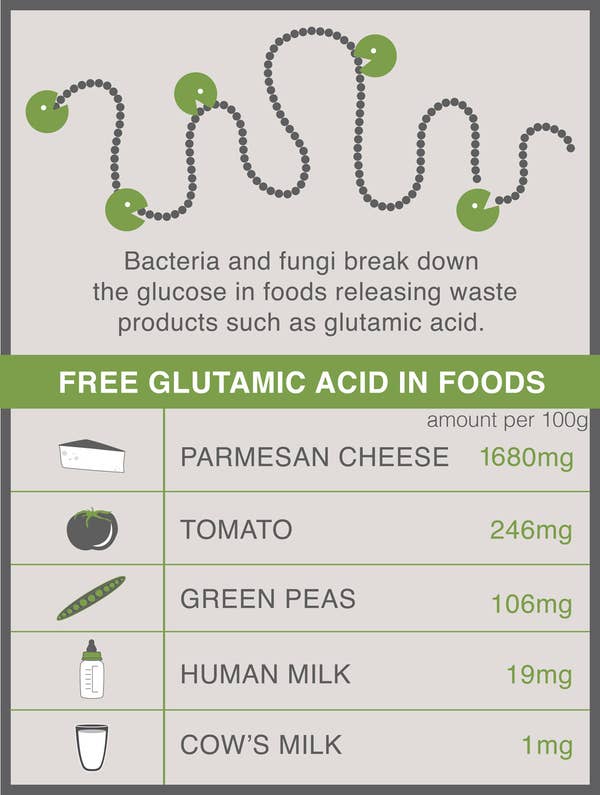Americans Consume 13 Grams Of Naturally Occurring MSG Glutamate Ion Everyday In Common Foods Like Proteins, Cheese, Tomatoes And Peas
From BuzzFeed, "
The Notorious MSG’s Unlikely Formula For Success: The “umami” craze has turned a much-maligned and misunderstood food additive into an object of obsession for the world’s most innovative chefs. But secret ingredient monosodium glutamate’s biggest secret may be that there was never anything wrong with it at all." by John Mahoney:
According to FDA estimates, we consume 13 grams of glutamic acid [glutamate ion of MSG] in food every day, and it comes to us in one of three ways: Proteins are long chains of amino acids bound together, and most proteins contain some glutamic acid. Some foods, like Parmesan cheese, tomatoes, seaweed, or soy sauce also contain “free” glutamic acid, which is not bound with other aminos in proteins and is what our tongue reacts to when we taste umami. Fermentation can also significantly increase the amount of free glutamic acid found in a food.
The third way we typically consume glutamic acid is from MSG — the FDA estimates that most of us eat a little over a half a gram of it every day. If you eat Doritos, you’ve just eaten MSG. Same with practically any other snack with cheese powder, Kentucky Fried Chicken, many types of cold cuts, canned soups, soy sauce, and hundreds of other processed foods. MSG is made by pairing a single glutamic acid ion with a single sodium ion to form a salt — hence the full name, monosodium glutamate. When we eat MSG, our saliva dissolves the sodium ion from the glutamate ion, releasing free glutamic acid almost immediately and signaling to our brains that we’re eating something tasty and protein-rich.

No comments:
Post a Comment